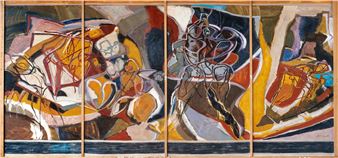Romantics to Moderns: A Survey of British Watercolors and Drawings from the Collection of BNY Mellon
Begun in 1980 at the encouragement of the collector and philanthropist Paul Mellon, the British watercolors and drawings in BNY Mellon’s collection represent more than three decades of building and refining, an eloquent extension of the Mellon Family legacy in art and culture. That legacy includes generous gifts to the National Gallery of Art, the Virginia Museum of Art, as well as the establishment of the Yale Center for British Art and the London Center for British Studies in the History of Art. The Museum of Fine Arts has featured numerous exhibitions of French art of the 18th to early 20th centuries, but this is the first one solely devoted to British art of the same era.

Recommended for you
Begun in 1980 at the encouragement of the collector and philanthropist Paul Mellon, the British watercolors and drawings in BNY Mellon’s collection represent more than three decades of building and refining, an eloquent extension of the Mellon Family legacy in art and culture. That legacy includes generous gifts to the National Gallery of Art, the Virginia Museum of Art, as well as the establishment of the Yale Center for British Art and the London Center for British Studies in the History of Art. The Museum of Fine Arts has featured numerous exhibitions of French art of the 18th to early 20th centuries, but this is the first one solely devoted to British art of the same era.
Contact details












